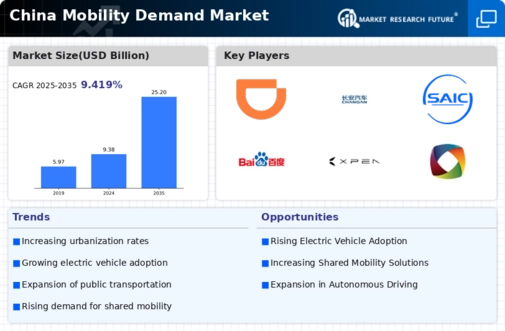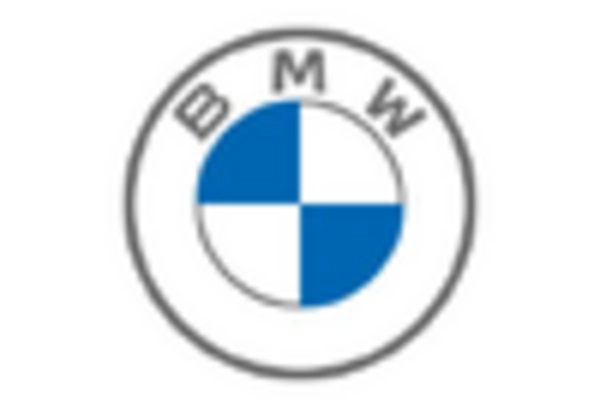Urbanization and Population Growth
The rapid urbanization in China is a pivotal driver of the mobility demand market. As urban areas expand, the population density increases, leading to heightened demand for efficient transportation solutions. By 2025, it is projected that over 60% of China's population will reside in urban centers, necessitating innovative mobility options. This urban shift is likely to spur investments in public transport systems, including subways and buses, which are essential for accommodating the growing populace. Furthermore, the mobility demand market is expected to see a surge in demand for last-mile connectivity solutions, as urban dwellers seek convenient access to public transport. The integration of smart city initiatives may further enhance the efficiency of these systems, thereby influencing consumer preferences and mobility patterns.
Government Policies and Regulations
Government policies play a crucial role in shaping the mobility demand market in China. The Chinese government has implemented various regulations aimed at promoting sustainable transportation solutions, including electric vehicles (EVs) and public transport. For instance, incentives such as subsidies for EV purchases and investments in charging infrastructure are designed to encourage the adoption of cleaner technologies. In 2025, the mobility demand market is likely to benefit from these initiatives, as the government aims to have 20% of all vehicles on the road be electric. Additionally, stricter emissions regulations may compel traditional vehicle manufacturers to innovate, thereby increasing competition and expanding the market. These policies not only drive consumer behavior but also influence the overall landscape of transportation in urban areas.
Economic Growth and Disposable Income
Economic growth in China is a fundamental driver of the mobility demand market. As the economy expands, disposable income levels are rising, allowing consumers to invest more in transportation options. The mobility demand market is likely to experience increased demand for personal vehicles, particularly among the emerging middle class. By 2025, it is projected that the average disposable income will have increased significantly, leading to a shift in consumer behavior towards ownership of private vehicles. Additionally, this economic growth may stimulate demand for premium mobility services, such as luxury ride-hailing and high-end public transport options. As consumers seek greater convenience and comfort, the mobility demand market is expected to adapt to these evolving preferences.
Environmental Concerns and Sustainability
Environmental concerns are increasingly shaping the mobility demand market in China. As awareness of climate change and air pollution grows, consumers are becoming more inclined to seek sustainable transportation options. The mobility demand market is responding to this shift by promoting electric vehicles and public transport solutions that minimize carbon footprints. In 2025, it is expected that the demand for eco-friendly transportation will rise, driven by both consumer preferences and regulatory pressures. The government’s commitment to reducing greenhouse gas emissions may further accelerate this trend, as investments in green infrastructure become more prevalent. Consequently, companies that prioritize sustainability in their offerings are likely to gain a competitive edge in the evolving market landscape.
Technological Advancements in Transportation
Technological advancements are significantly influencing the mobility demand market in China. Innovations such as autonomous vehicles, artificial intelligence, and mobile applications are transforming how individuals interact with transportation services. The rise of ride-hailing platforms and smart navigation systems has altered consumer expectations, leading to a demand for more personalized and efficient travel options. By 2025, it is anticipated that the mobility demand market will witness a substantial increase in the integration of these technologies, enhancing user experience and operational efficiency. Moreover, advancements in data analytics may enable transportation providers to optimize routes and reduce congestion, further driving demand. As technology continues to evolve, it is likely to create new opportunities and challenges within the mobility sector.

















Leave a Comment